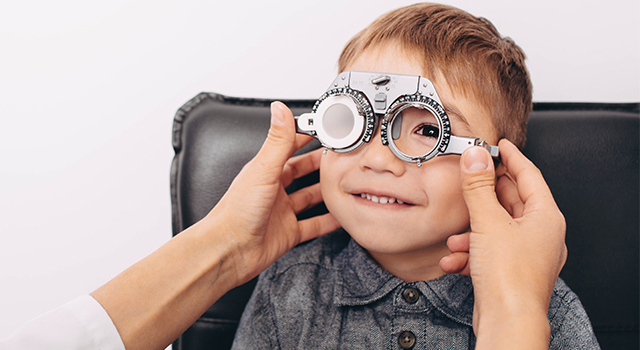Did you know that even if a child has 20/20 vision, they should still go to the eye doctor once a year.
A comprehensive eye exam will assess their vision as well as detect problems with their eye health and possibly even their overall health, even if your child has 20/20 vision.
It’s important to take your child to an eye doctor for a comprehensive eye exam once a year to assess if their vision has changed and to check for eye diseases and other health issues.
Schedule an eye exam with an eye doctor near you to have your child’s eyes checked.
SEE RELATED: Does my Baby have an Eye Problem?
Are school vision screenings enough?
No. A school vision screening offers limited testing, as it uses a vision chart, which only tests distance vision acuity, to see if a child has 20/20 sight.
Most vision screenings only test distance 20/20 vision, and do not assess near vision acuity, or the child’s visual skills, which are needed for effective learning, reading and computer use – all essential for school.
School screenings don’t test a child’s visual skills, such as eye tracking, focusing, and the eyes’ ability to work together – needed in the classroom and sports field.
Finally, the screening doesn’t provide little if any information about a child’s ocular health. A child could have 20/20 sight, but still have a serious eye problem.
Why are children’s eye exams important?
Every child should get their eyes examined to ensure they don’t have any vision problems that could threaten their safety or academic achievement.
Accurate eye movement, relaxed focusing, and visual acuity at all distances are only a few of the visual abilities that are required for effective learning.
When should a child’s eyes be examined?
A child’s first eye exam should be when they are six months old, the optometrist will then advise you when the next eye test is due.
Most eye doctors recommend annual eye exams, but as a minimum their next eye exam should be at age three, and again right before they enter first grade.
As long as no vision correction is needed, children should have an eye exam every one to two years once they reach school age. Children who need glasses or contact lenses should see an eye doctor at least once a year or as recommended by their eye doctor.
Signs of eye problems
The following warning signs may indicate an eye problem:
- Avoiding reading, writing or drawing
- Closing one eye when they go out in bright sunlight
- Closing one eye when they watch TV or read
- Complaining about double or blurred vision
- Excessively rubbing their eyes
- Excessively watery eyes
- Having unexplained headaches
- Holding books or objects unusually close to their face or sitting very close to the TV
- Poor hand-eye coordination and clumsiness
LEARN MORE: Guide to Children’s Eye Exams
If you’re worried that your child may have a vision problem, or it’s time for their regular eye exam, schedule an appointment with an eye doctor near you.
The earlier eye problems are detected, the sooner they can be treated.


